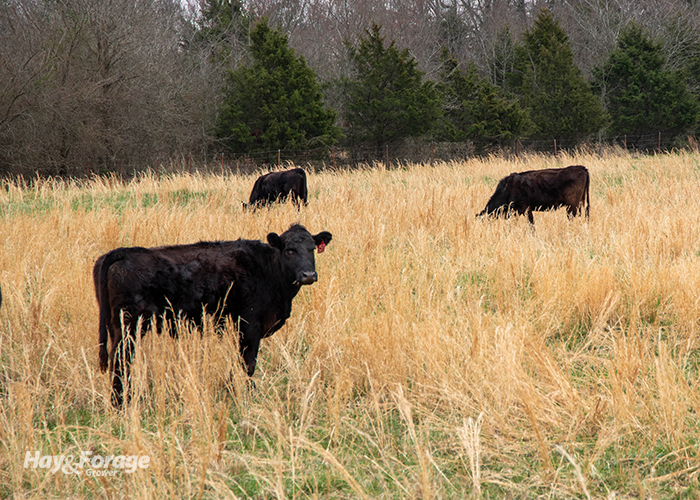
For the most part, I like things looking good but not necessarily perfect. This mantra applies to my vehicle, my yard, my garage, my desk, and most other publicly viewed assets. Having driven by and walked thousands of pastures in my lifetime, I can say the same thing about my preferences for them — good but not necessarily perfect, which few are.
A lot of things can make a pasture fall below the good category at any given time. They can be overgrazed, too mature, or too weedy, among other things. It’s difficult to put a precise definition on what is an undesirable pasture, but “you know ‘em when you see ‘em.”
Perhaps no other plant species screams “We’ve got a problem here!” more than broomsedge. Unlike some pasture weed species, cattle avoid it like most people shun eating head cheese. This allows the plant to grow tall and develop into nothing but a mass of yellow stems.
It’s rare that you find broomsedge, a warm-season perennial grass, in a pasture or hayfield that has been well-managed for multiple years. It generally only grows where the growth of desirable forage plants has been compromised. In other words, broomsedge exploits the misfortune of other species and does just fine where nutrients and an optimum soil pH are lacking.
Broomsedge spottings are much more common than they need to be, especially south of the Mason-Dixon line. In late summer and fall, its tall, tan stalks stick out like a guy wearing a tuxedo at a pasture walk. This might not be so bad if broomsedge had any feeding value, but it doesn’t. The plant is mostly stalk and fluffy seedhead. No selective herbicide will control it and selectively leave desirable cool-season grasses.
Eliminating or reducing broomsedge populations is not that difficult, and we’ve seen it done on numerous occasions. You simply must identify the problem that caused its presence in the first place. Below is a list of practices that, if followed, will have your pastures and hayfields broomsedge-free, or at least nearly so.
Get soil fertility into an optimum range. Often, the reason for a broomsedge infestation is a lack of soil fertility, especially in hayfields. It may be a low soil pH, or more often deficient levels of available phosphorus and/or potassium. There have been many examples of near broomsedge elimination simply by getting soil fertility up to speed.
If adding commercial fertilizer or manure/litter isn’t feasible from an economic standpoint, strategically feed hay on broomsedge-infested pastures. The combination of hay waste, manure, and urine deposition will improve soil fertility, but it will take a few to many years. Strategic winter bale grazing or rolling bales out on winter pastures will also help rectify soil fertility issues.
Adjust your grazing strategy. It’s rare to find a broomsedge problem where some form of rotational grazing has been implemented for several years. Intentional rotation of pastures favors desirable species and helps to evenly spread manure and urine.
Giving cool-season grasses adequate rest intervals will help plants outcompete the broomsedge, especially in the fall. Broomsedge seedlings are not very competitive. Again, anything that can be done to encourage the growth of desirable species will inhibit the presence of broomsedge.
Get out the mower. Clipping pastures will both weaken broomsedge plants and open the canopy for more desirable forage growth. It will also offer some aesthetic value. It’s recommended to clip pastures when the brown broomsedge seedheads first appear and then again in the early fall to help weaken the plants going into winter. Clipping may not eliminate broomsedge immediately, but over time, there will be a reduction in the number of plants and derogatory comments from the neighbors.
Apply nitrogen. Use nitrogen fertilizer to encourage the growth of the cool-season grasses such as tall fescue. This can be done after the first clipping in late summer to encourage fall grass growth.
Interseed more grasses. If the problem is a thin stand of grass, but soil fertility is still adequate, interseeding grasses to thicken the stand will be beneficial. Remember, this is a war of competition.
Start over. If stands are extremely thin, it may be best to simply spray the entire pasture or hayfield with a nonselective herbicide and reestablish the field. Again, make sure soil fertility is at optimum levels before reseeding or the same broomsedge problem will persist.
Broomsedge is an indicator plant; it tells us there’s a problem. Fix the problem(s) and the broomsedge will disappear. This has been shown to be true in many production and research fields over the years.

